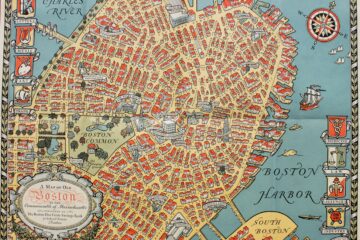Backcountry Futurism, or the Albion Seed Theory of American Cultural Determinism, part 2
by Blake Hood
Backcountry History
I WILL REFRAIN from delving too deeply into original customs of the Borderers. Fisher himself has already done great work on this which you can find here. But it is important to this theory that one understands exactly when these people arrived in America and where they went.
The Borderers arrived in Pennsylvania on the eve of the American War of Independence — some even just three or four years before the fighting broke out. After making landfall, they immediately left the coastal cities and moved into the mountainous interior as far north as New Hampshire and as far south as the Carolinas. But the majority moved west into the middle Appalachian Mountains. After the war — for which they did most of the fighting as attested to by Washington, “If defeated everywhere else, I will make my last stand for liberty among the Scotch-Irish of my native Virginia” — they poured into what would become the states most associated with their folkway, Kentucky and Tennessee. From then on, their folk-wandering never ceases and these men fill out the rest of the country from Texas and California to Montana and Alaska.
This begins the heroic age of the Scots-Irish. It was the time of the frontiersman and the cowboy (early and late 19th century respectively). It included the bloody Civil War, during which they were marred fighting on both sides of the conflict. But ultimately they became the proto-typical ‘Westerner’ who hacked his way across the North American continent to accomplish Manifest Destiny. Teddy Roosevelt, in his work Winning of the West identified them as the first indigenous White Americans. As a purely westward facing people, they were the folkway that broke most with the world of old Europe. As they would tell you today, they are the ‘Real Americans’.
But even as they populated much of the country, they never achieved full cultural and political dominance on a national scale. They have sent many of their own to the Office of the President. Among them we count Jackson, Polk, Johnson, Grant, Roosevelt (the good one), Wilson, Johnson (the bad one), Nixon, Clinton, and many others (it is actually quite remarkable — as much as a third of American presidents have ancestors from Ulster in particular.) However, these presidencies have always reflected another more dominant folkway of the time or were singular rebellious administrations opposed to it.
Politically, this will all be changing very soon. The Quaker-Jewish order that began with FDR pulled the majority of the Borderers out of rural isolation and poverty for the first time ever during the New Deal era. The Borderers had finally been given a stake and brought into mainstream society, even if it was in a carefully proscribed way. And perhaps more importantly, they now had an institution that could employ many millions of them generation after generation throughout the 20th century — the American Military-Industrial Complex.
Backcountry Today
There is an important change taking place in these first few decades of the 21st century of which most are still only dimly aware. White American culture is in the process of transitioning away from the Quaker-Ideal of tolerance, pluralism, non-violence, and hard work to a Backcountry-Ideal of survival culture and war. This is occurring both because of the law of cultural life-cycles that I discussed in the previous post, and because the new conditions of life for White Americans necessitate this particular response.
It is important to understand that Backcountry culture is not only a cause of violence and chaos but also the response to it. This folkway was born in violence and strife and it has lived in it ever since. In a world of endemic strife and weak state protection, people become more warlike and clannish in order to survive. Borderers birthed a warrior culture on the Anglo-Scottish borderlands in the medieval era, carried it to Ireland in the early modern era, and deposited it in new fertile ground of the wild American backcountry.
Of course for most White Americans this is an alien world. The Redneck has always been something different and apart from a normal ‘middle class’ White American in the popular consciousness. But the adult human kindergarten that was life in the late 20th century America is over and not coming back. Our lives in the early 21st century will feel more and more like life on the trans-Appalachian frontier; we will be subject to savage attacks by non-Whites, roaming criminal gangs, corrupt officials, and absentee landlords.
The whole idea of what a normal White American is will change. The culture of White Americans will be more and more like the culture of the old Scots-Irish. Or it will at least be that culture that will come to be idealized. This will have positive and negative effects. Expect White Americans to become even poorer than they already are, but watch for a renewal of the extended family and local community. Life will continue to get cheaper but there will be more of it. Science and literature will continue to decline, but magic and song will be reborn. Perhaps more importantly White Guilt will end and real White pride will begin in earnest.
In the next post we will dig deeper into what this ‘Borderization’ means for all aspects of our culture in this coming century.
* * *
Source: Volkish








This will either happen or the Whites will not survive. The current mentality of the majority of Whites in North America and elsewhere is not sustainable. The jews have moved millions of non-white males of military age into our lands and it will become a very bloody affair when the struggle against them begins in earnest.